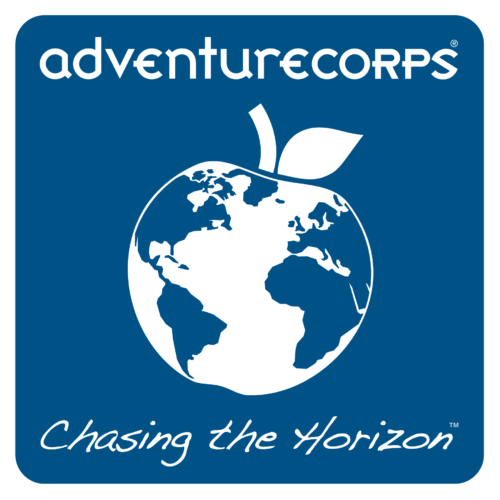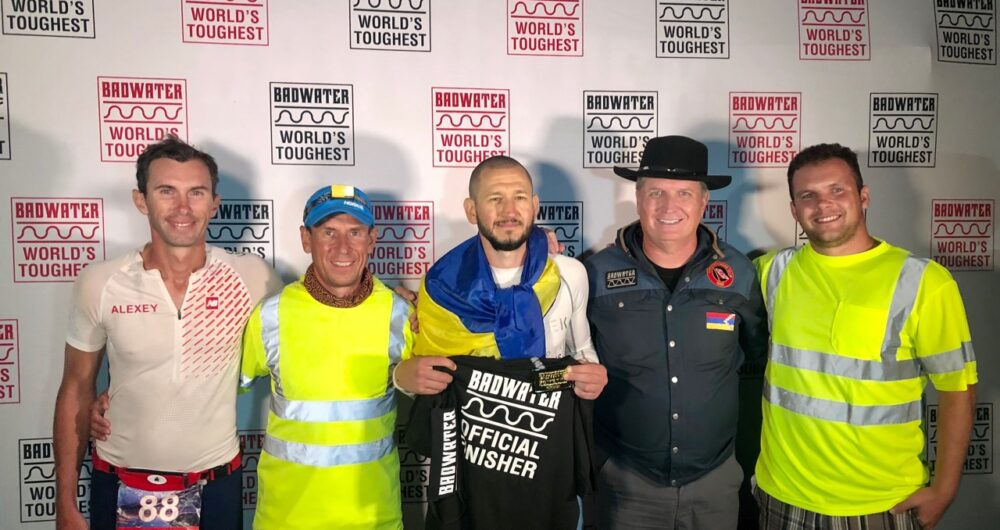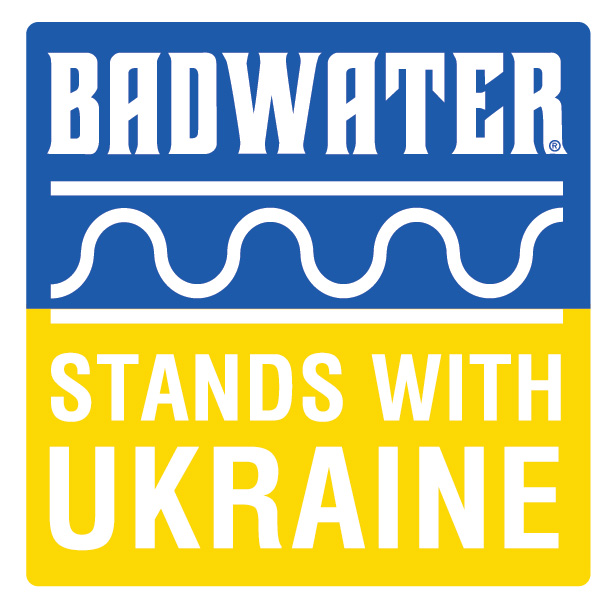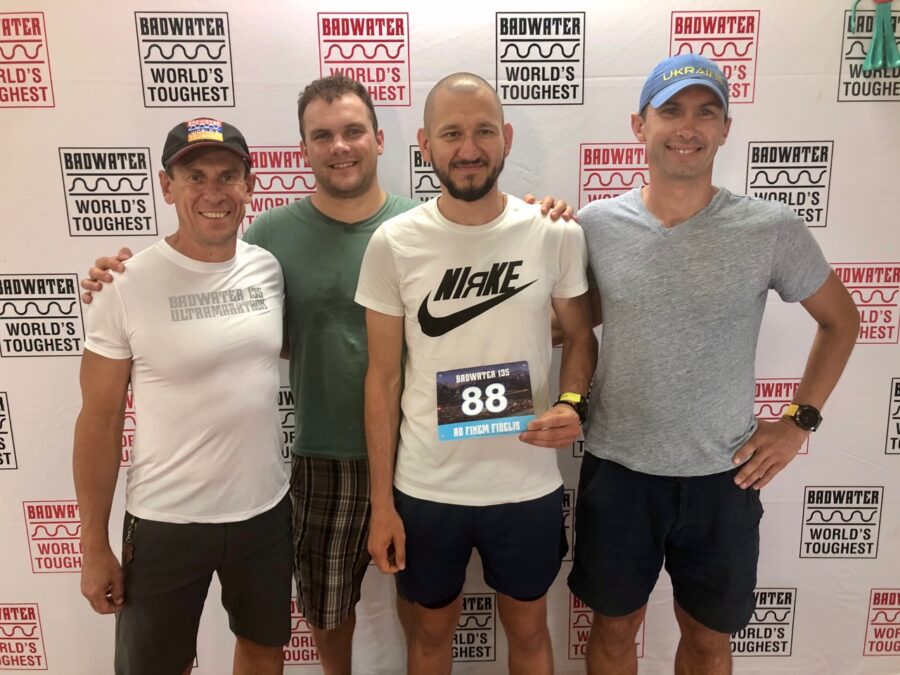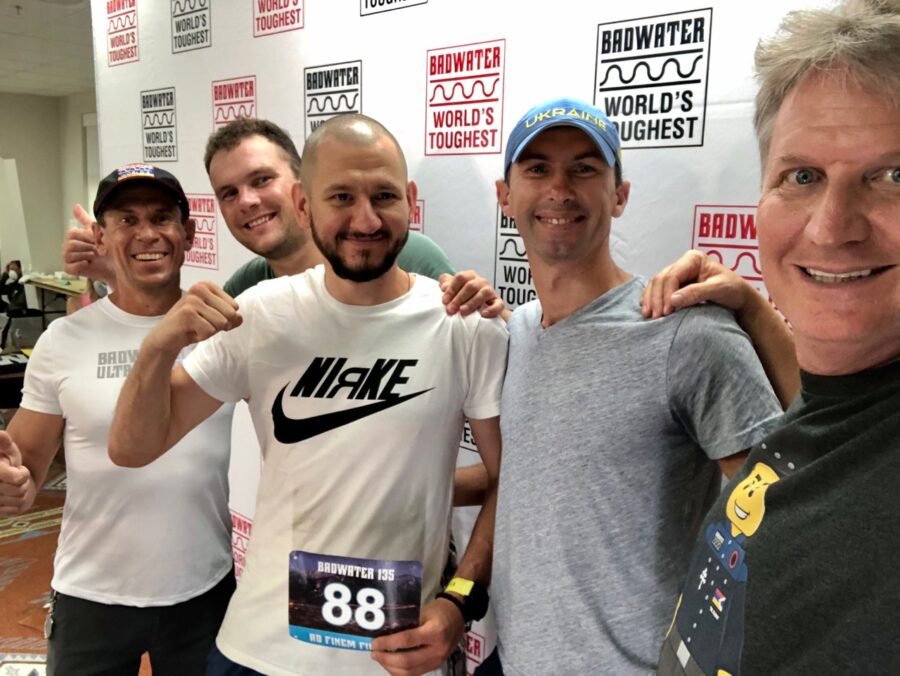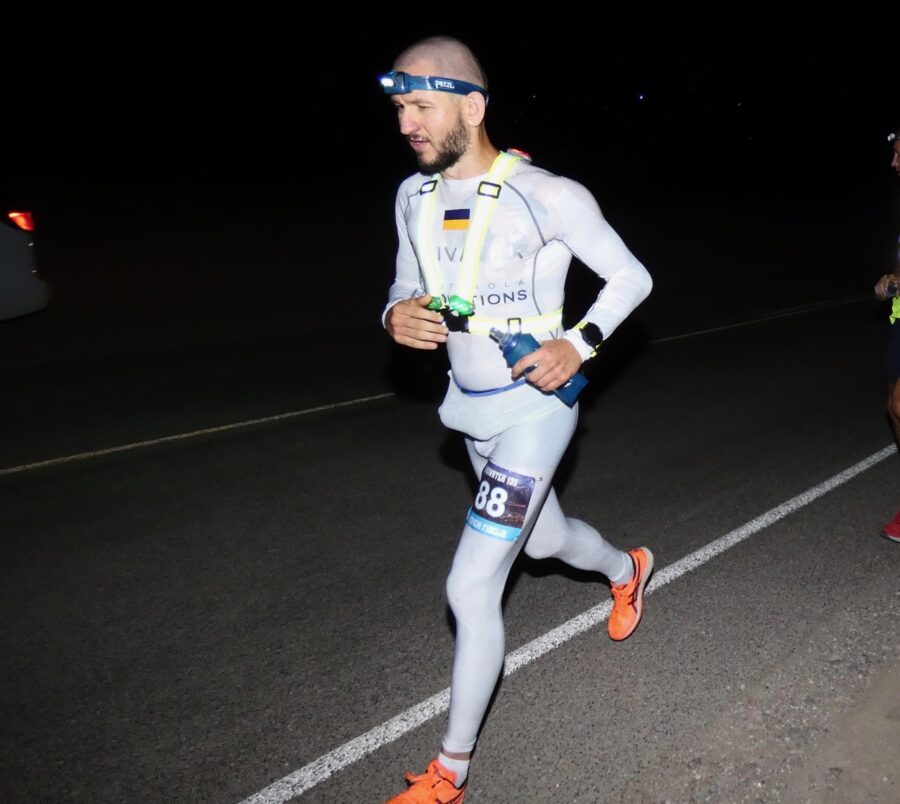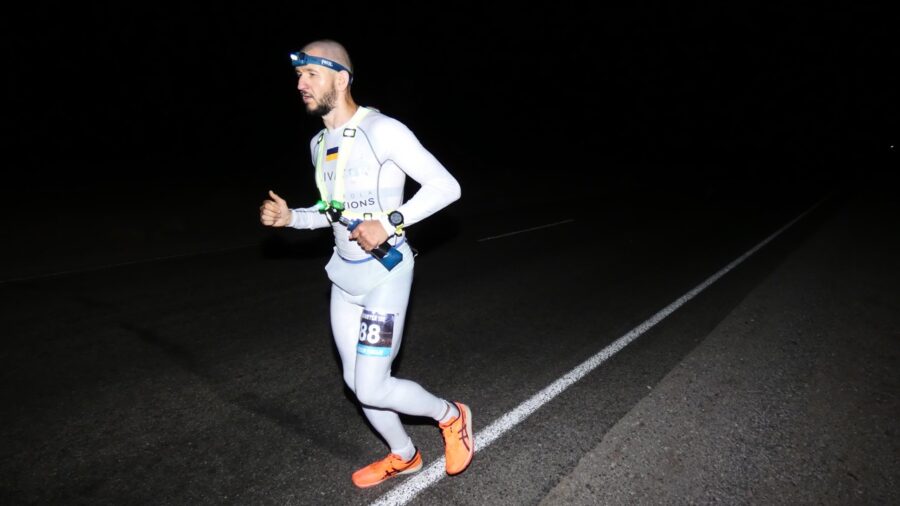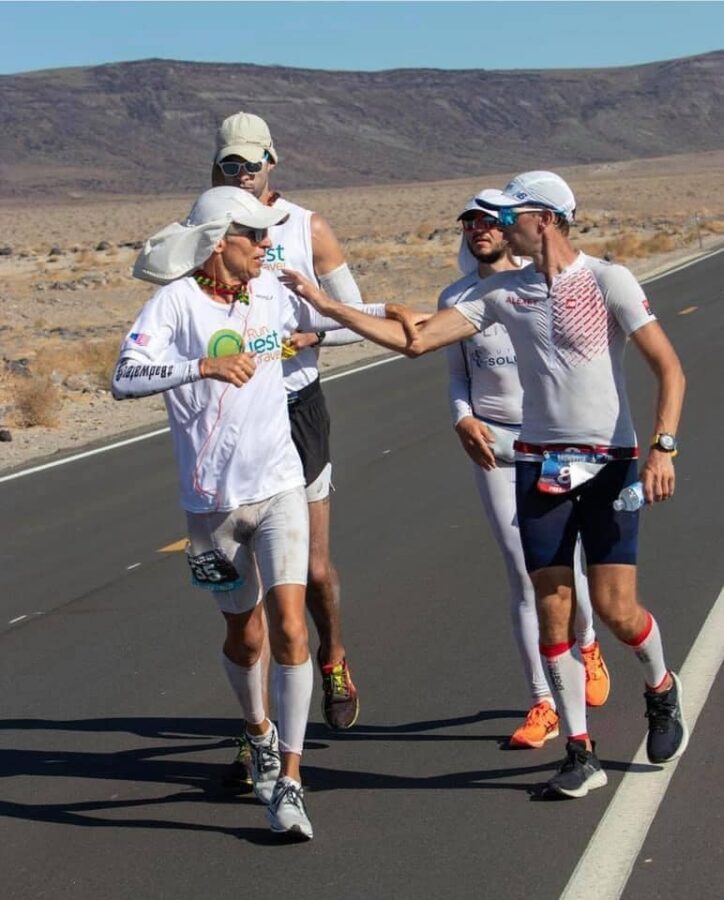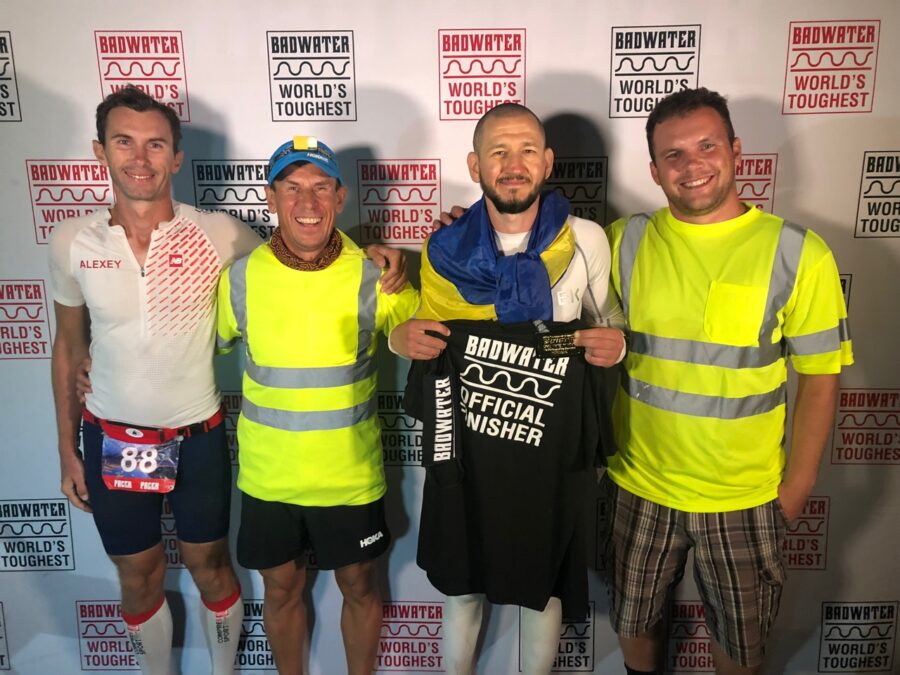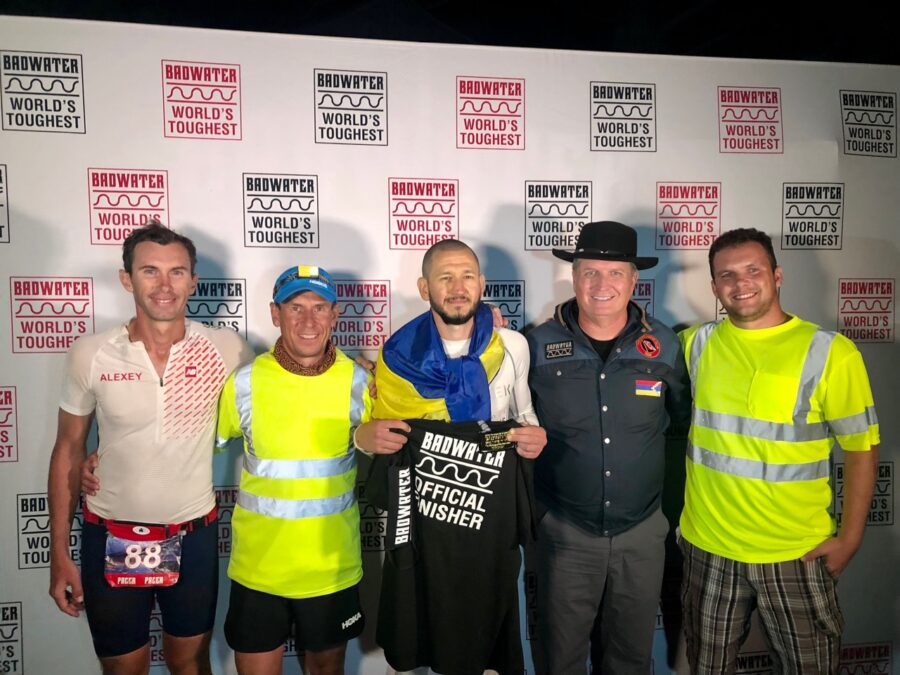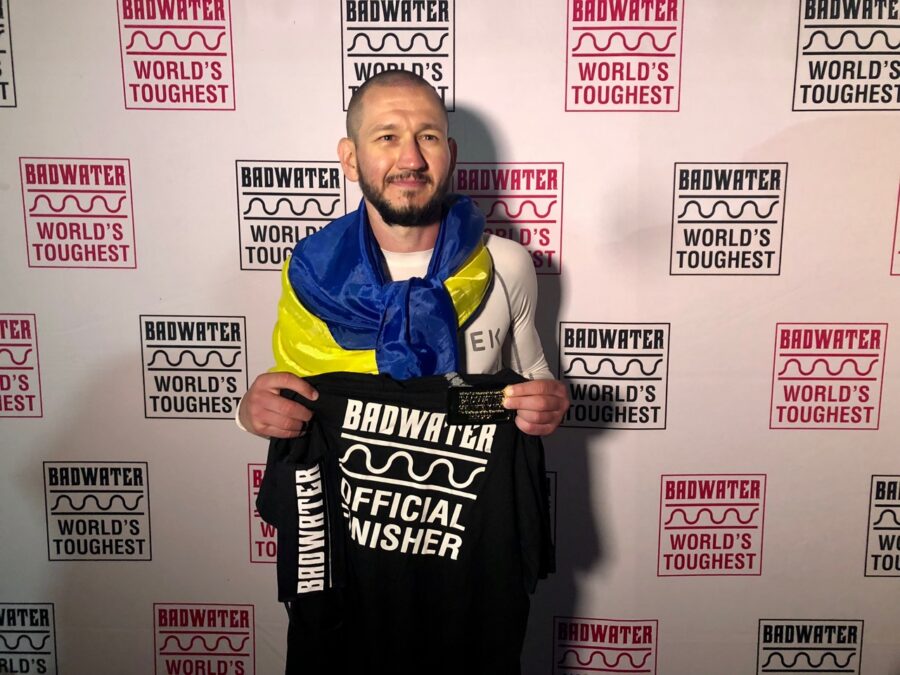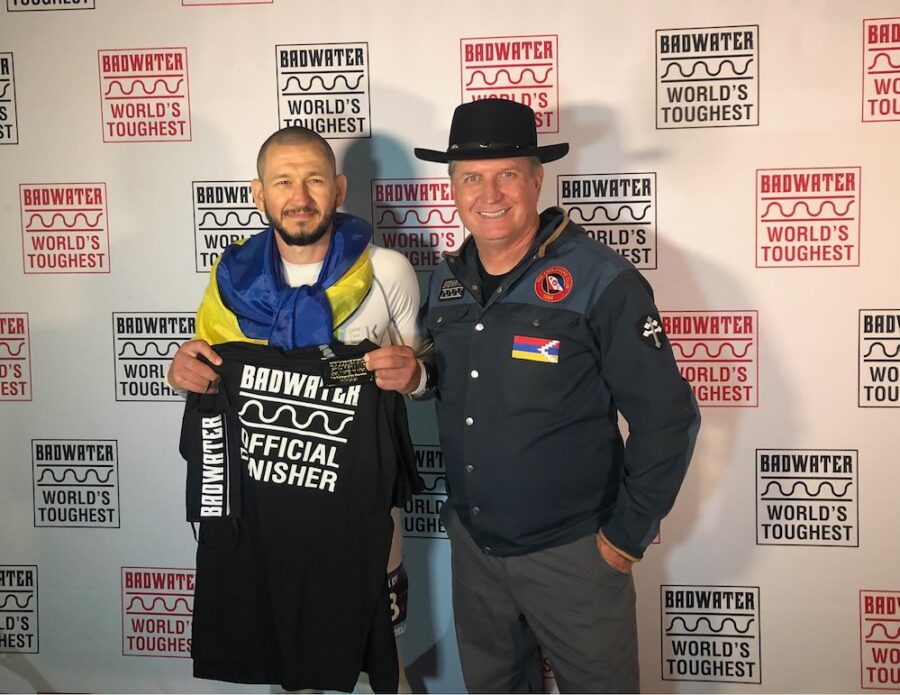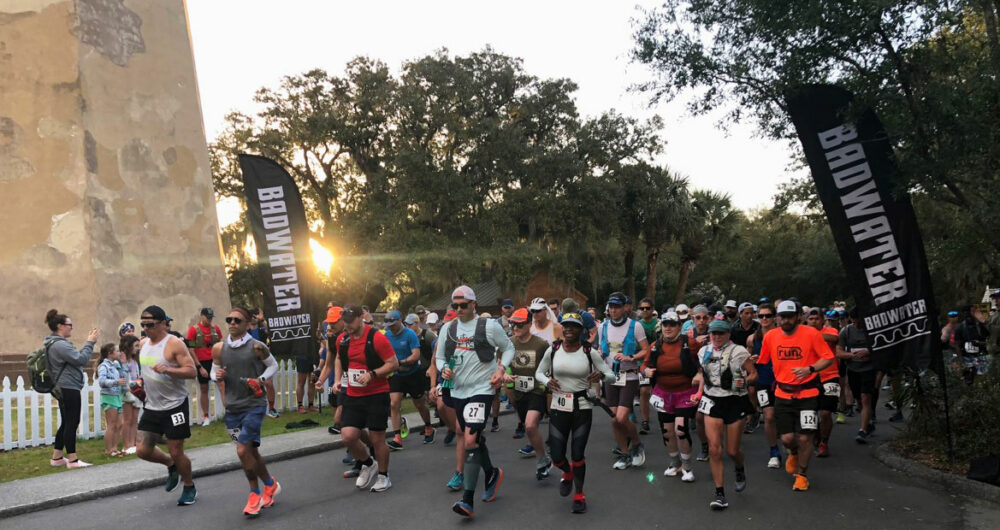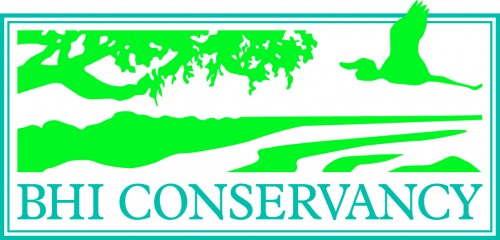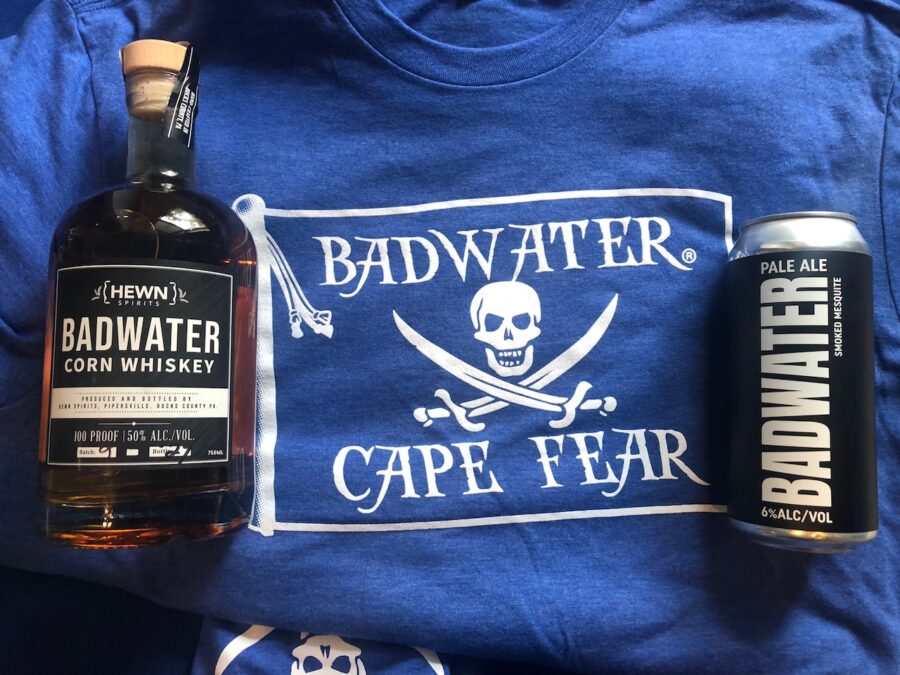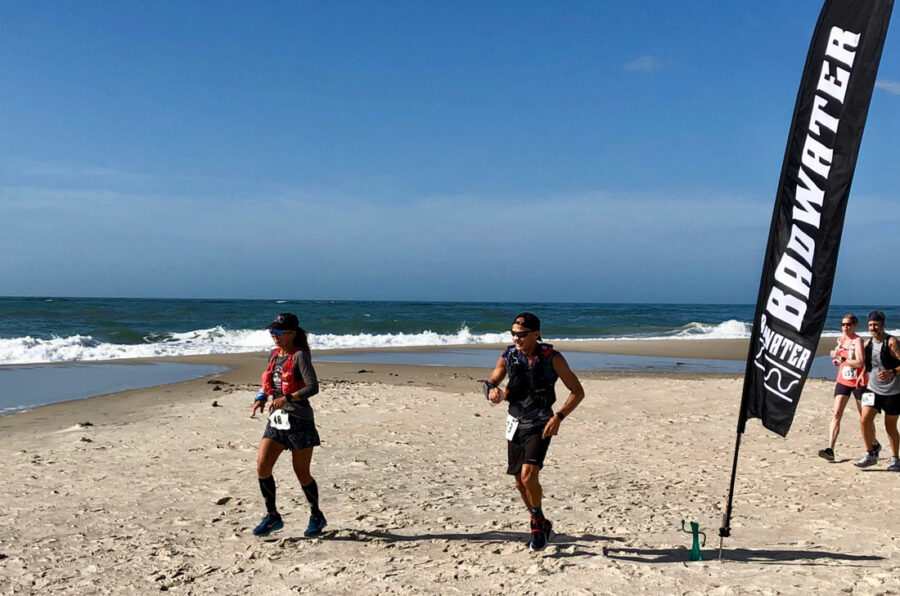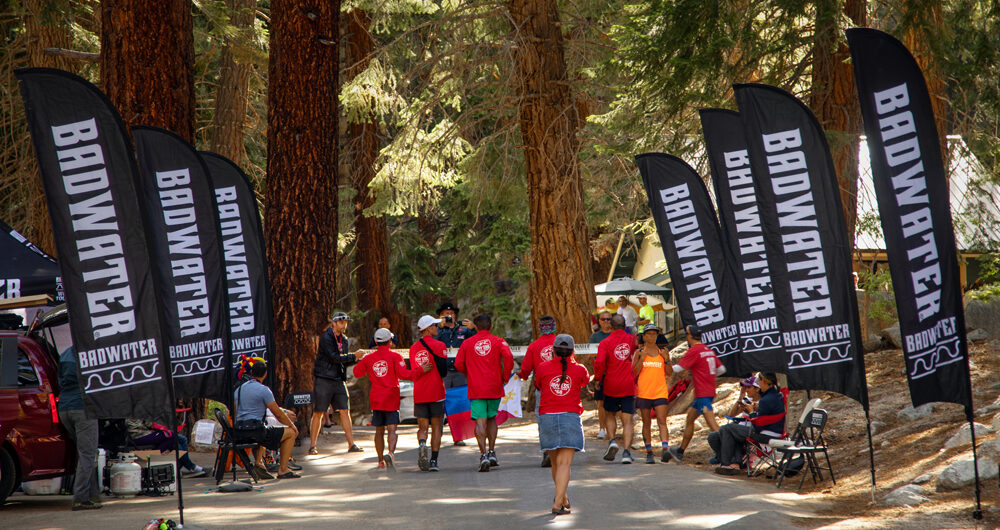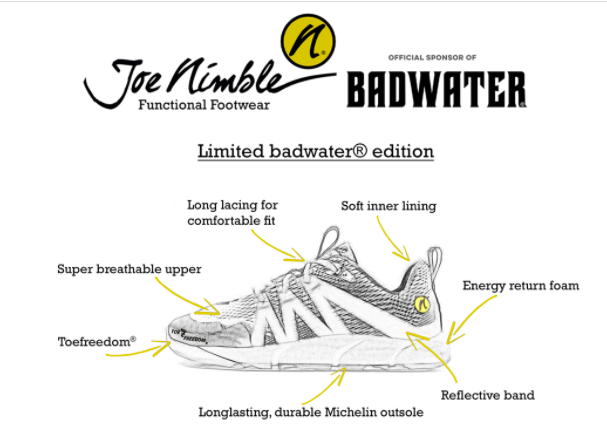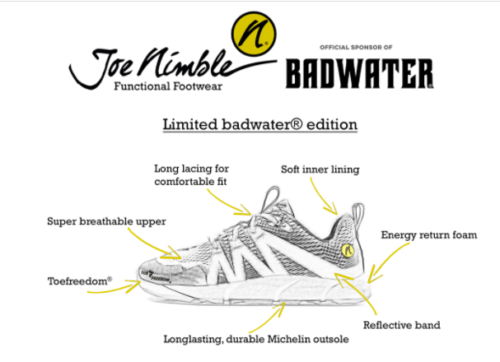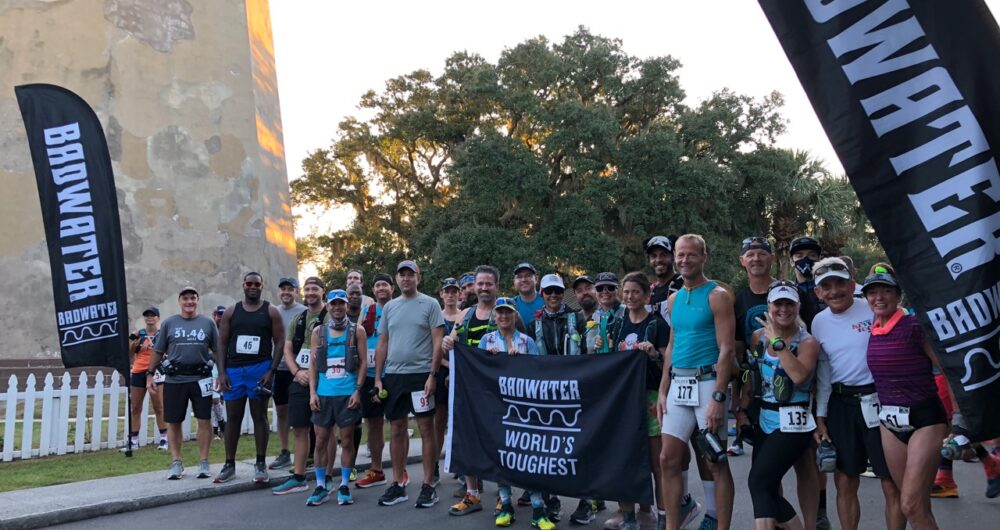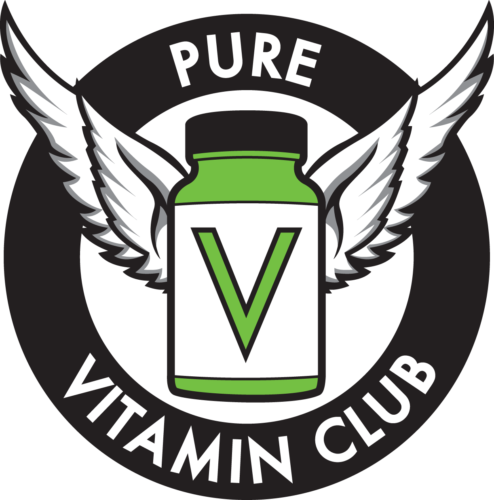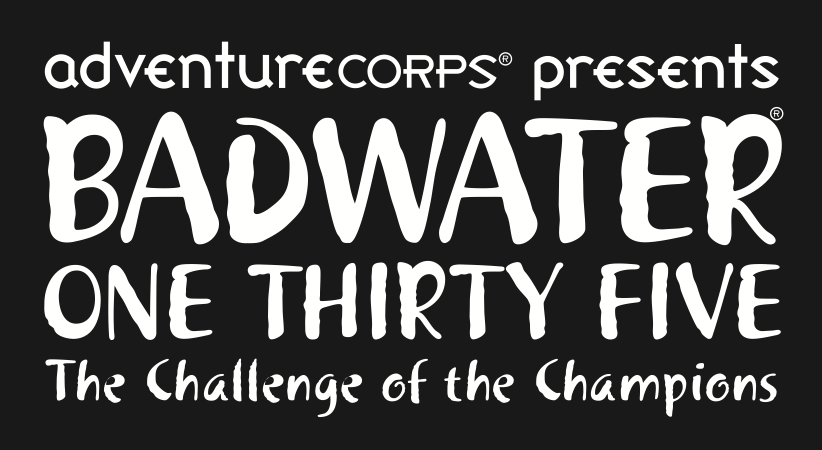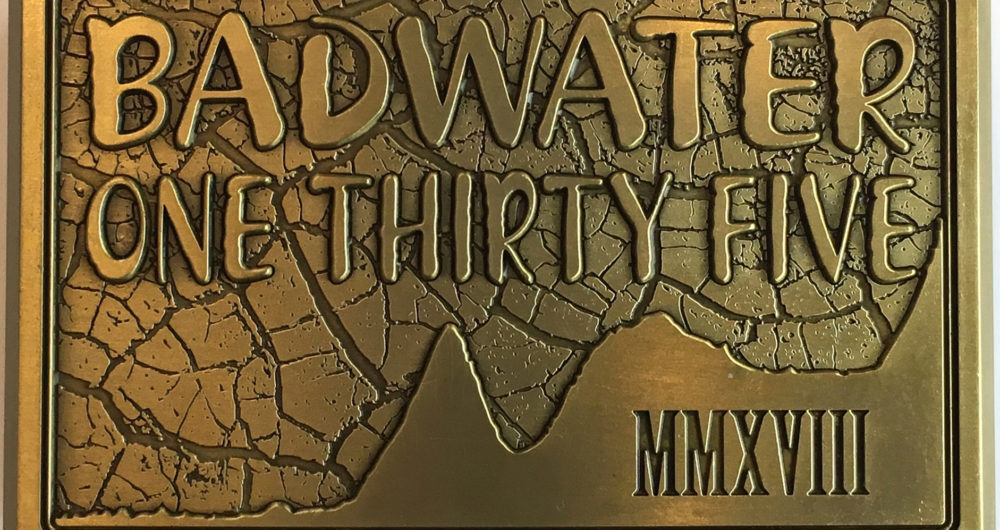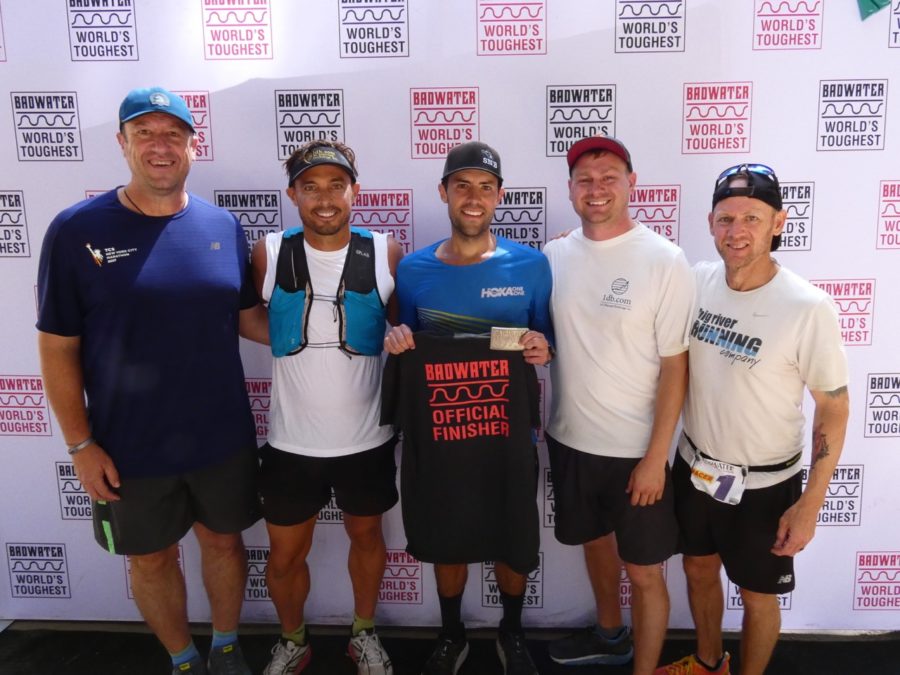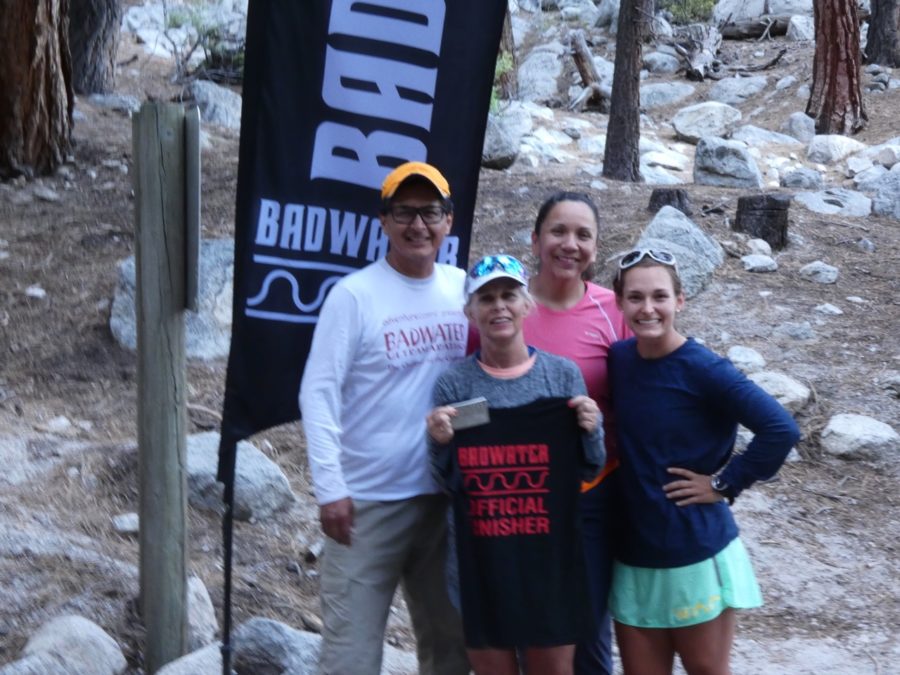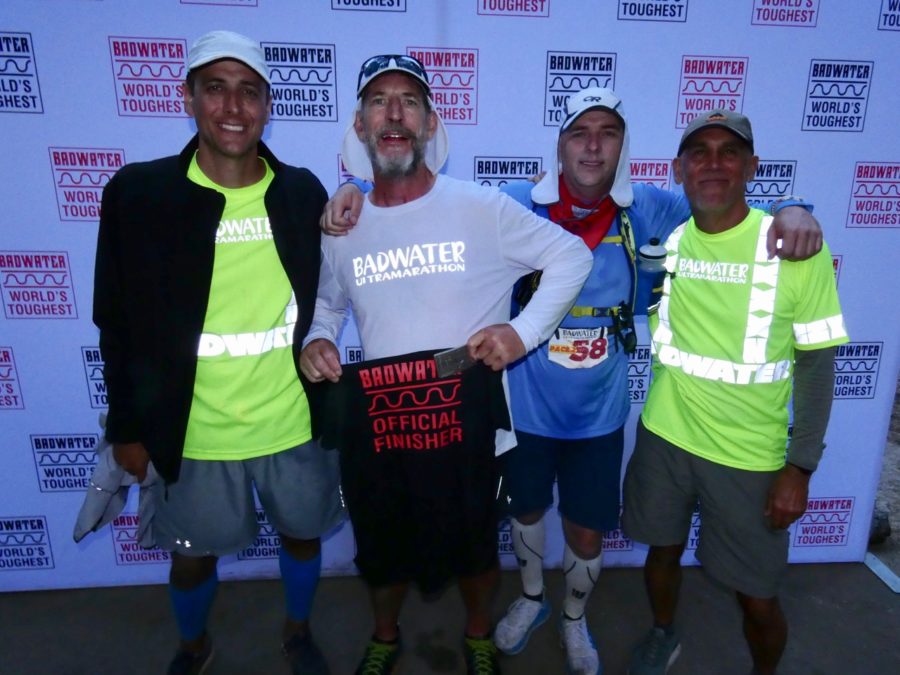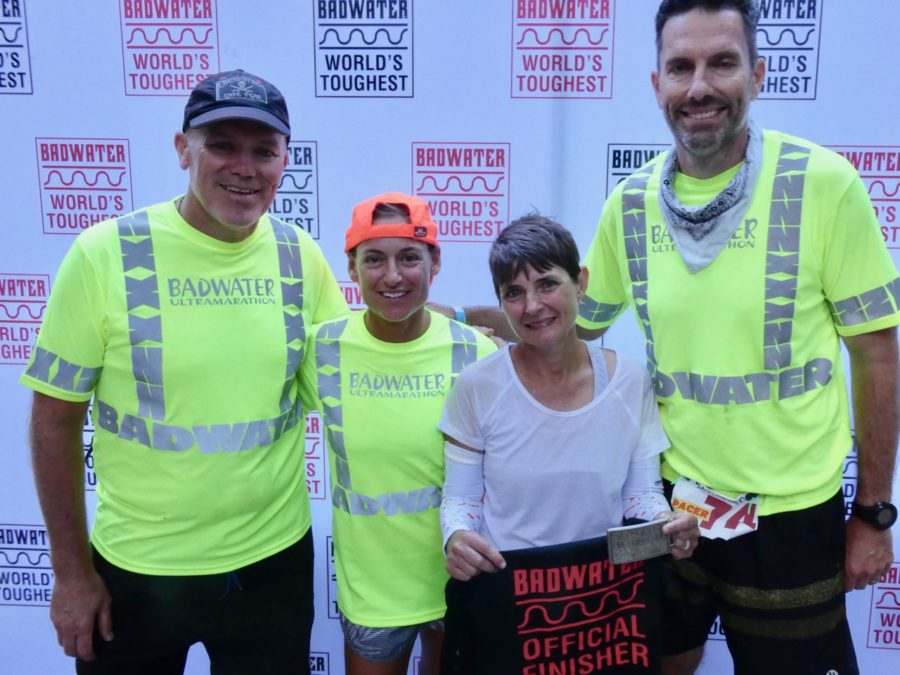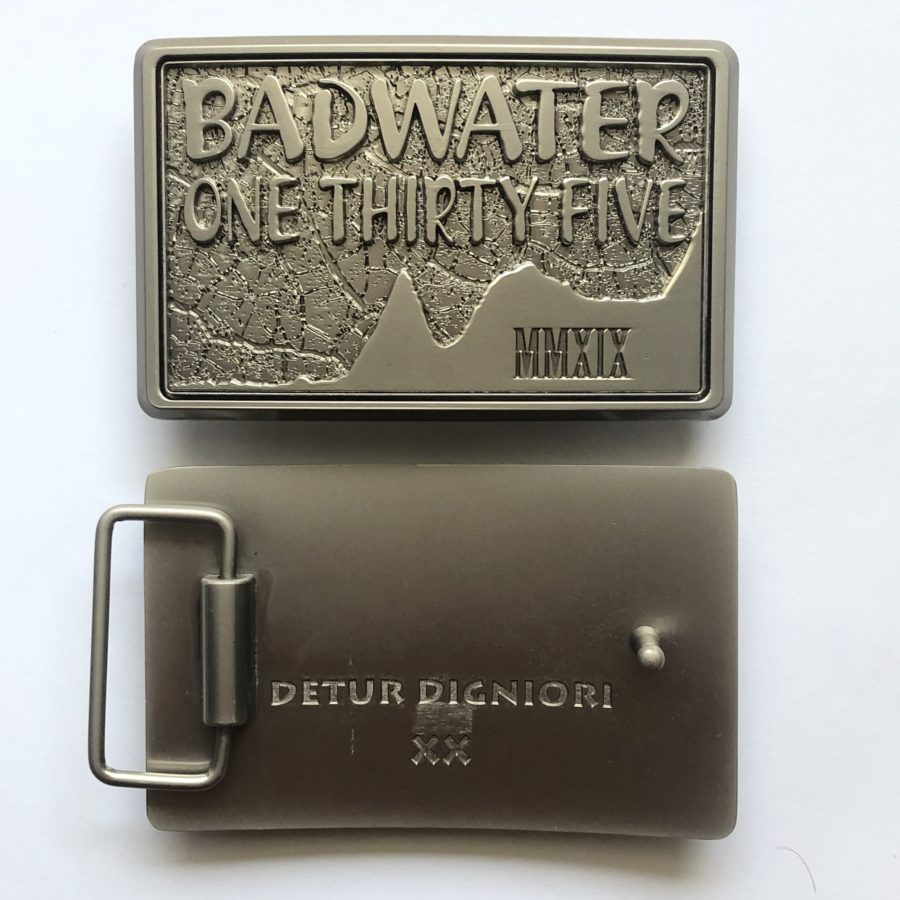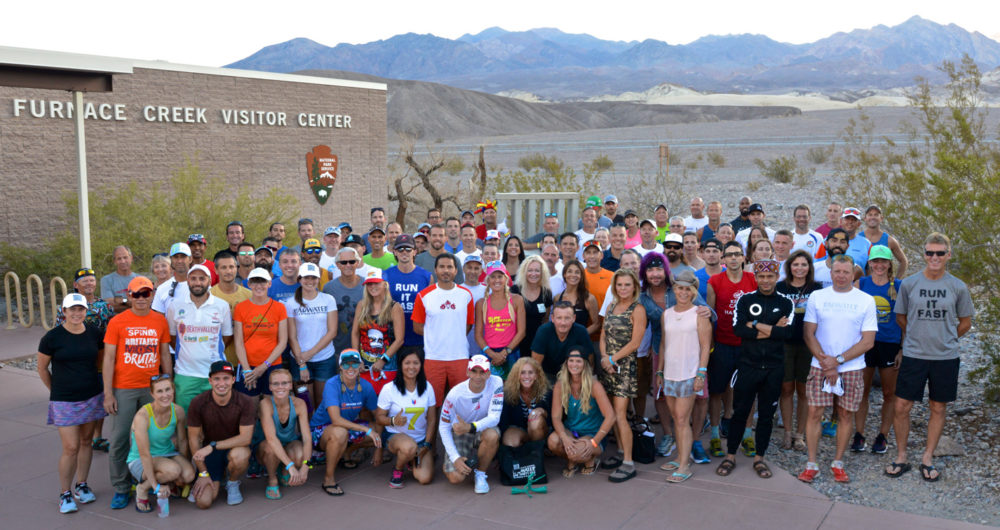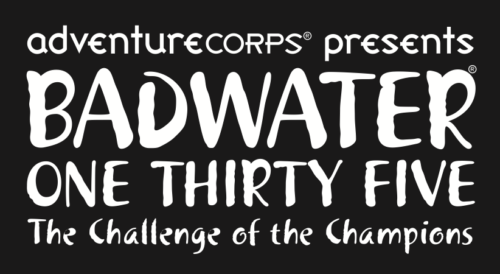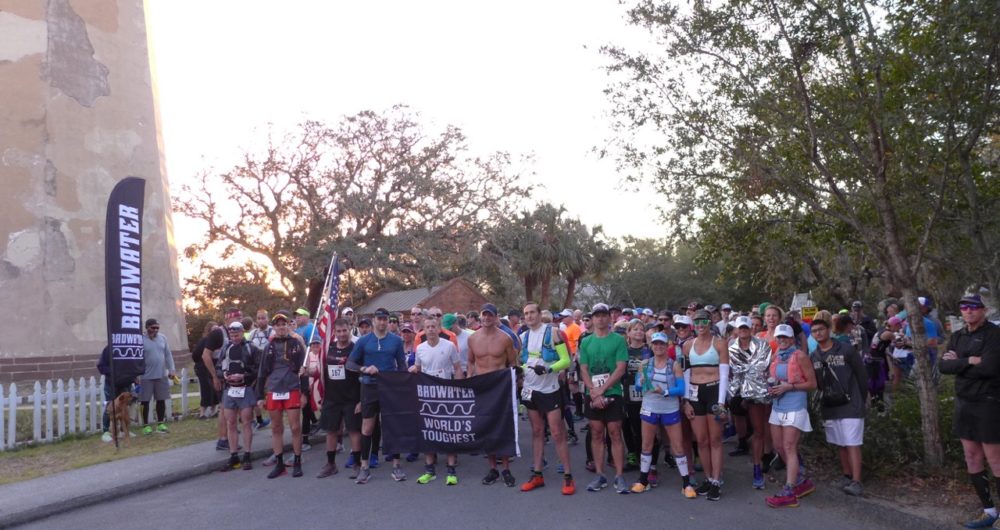THE WORLD’S TOUGHEST FOOT RACE CELEBRATES 44th ANNIVERSARY OF ICONIC ROUTE FROM DEATH VALLEY NATIONAL PARK TO MOUNT WHITNEY
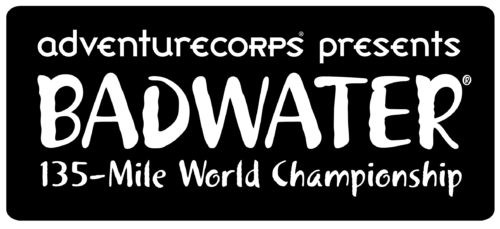
To download the basic Press Release along with the Media Kit and Media Credential Application in PDF format, click here.
To download the July 2021 issue of BADWATER Magazine, click here.
See the bottom of this page for many more links.
FOR IMMEDIATE RELEASE
Lone Pine, CA: On July 19-21, 2021, AdventureCORPS will present its legendary BADWATER® 135 Ultramarathon, the 135-Mile World Championship. Now in its 44th year – with the 2020 race canceled last-minute due to the pandemic – this world-renowned event pits up to 100 of the world’s toughest athletes against one another and the elements in a crucible like no other. From below sea level in scorching temperatures to altitudes as high as 8,360 feet (2548m), endurance athletes from 17 countries and 29 American states plus the Navajo Nation will face off in a grueling 135-mile trek non-stop from Death Valley to Mt. Whitney, CA. Widely recognized as “the world’s toughest foot race,” the invitational Badwater 135 is the most demanding and extreme running race on the planet.
The start line is at Badwater Basin, Death Valley, which marks the lowest elevation in North America at 280’ (85m) below sea level. The race finishes at Whitney Portal at 8,300’ (2530m). The course covers three mountain ranges for a total of 14,600’ (4450m) of cumulative vertical ascent and 6,100’ (1859m) of cumulative descent. Whitney Portal is the trailhead to the Mt. Whitney summit, the highest point in the contiguous United States. Competitors travel through places with names like Mushroom Rock, Furnace Creek, Salt Creek, Devil’s Cornfield, Devil’s Golf Course, Stovepipe Wells, Panamint Springs, Darwin, Keeler, Alabama Hills, and Lone Pine.
The Badwater 135 Ultramarathon is held under permits from – and in close collaboration with – Death Valley National Park, California Department of Transportation, U.S. Forest Service, and the County of Inyo.
Above: Death Valley National Park Superintendent Mike Reynolds welcomes the 2021 Badwater 135 runners, crew, and staff
AdventureCORPS – on behalf of all competitors and support crews – also gratefully acknowledges that these lands have been lived upon for at least 1000 years by native peoples, including the Timbisha Shoshone and the Lone Pine Paiute-Shoshone tribes who live on the race course today. We honor and share their deep reverence for these lands.
While runners began running the course in the 1970s, the race itself has been part of the fabric of life in Inyo County since 1987. A recent study indicated an annual economic impact of 1.2 million dollars, half of it spent in Death Valley National Park and surrounding gateway communities such as Lone Pine, CA. The race is supported by former U.S. Congressman Col. Paul Cook (Ret.) of California’s 8th District, the Inyo County Board of Supervisors, the Lone Pine Chamber of Commerce, and a wide panorama of businesses and charities which are positively impacted.
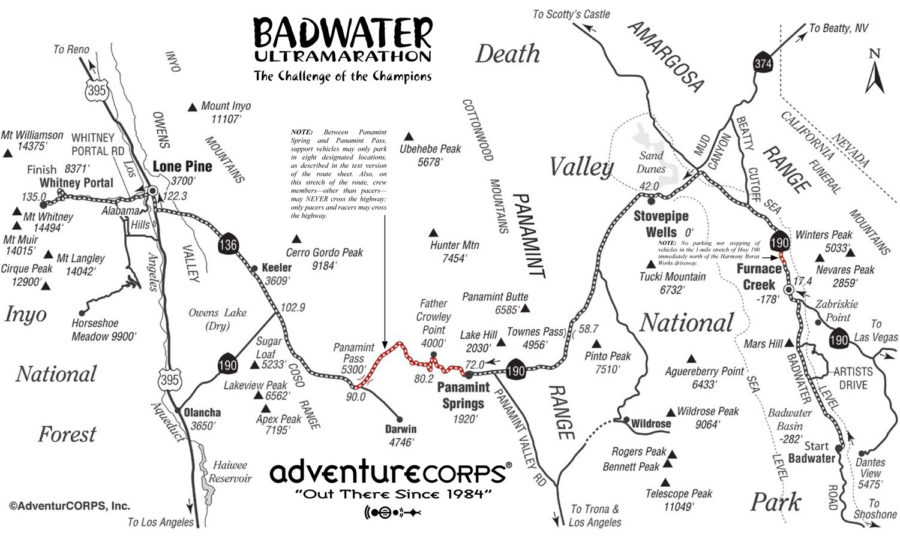
THE 2021 RACE FIELD
A true “challenge of the champions,” the 2021 Badwater 135 features 38 Badwater veterans and 46 rookies: die hard “ultra-runners” who have the necessary running credentials to not only apply for, but be selected, to compete in the race.
Despite COVID-caused international travel restrictions which will keep at least 15 foreign runners from competing this year, the race will still boast an international field. The 84 athletes in the 2021 Badwater 135 represent seventeen countries: Armenia, Australia, Canada, Czech Republic, El Salvador, Germany, Italy, Mexico, Netherlands, Philippines, Portugal, Russia, Slovakia, Sweden, Ukraine, United Kingdom, and United States of America, along with the Navajo Nation. See the full roster here.
Twenty-nine different American states and territories are represented: Arizona, California, Colorado, District of Columbia, Florida, Georgia, Indiana, Kansas, Kentucky, Maryland, Massachusetts, Minnesota, Mississippi, Missouri, Montana, Nebraska, Nevada, New Jersey, New York, North Carolina, Ohio, Oklahoma, Oregon, Pennsylvania, South Carolina, Tennessee, Texas, Vermont, and West Virginia.
There are 24 women and 60 men. The youngest runners are Ryan Fecteau, 28, of Malden, MA and Mollie Melton Yonker, 38, of Winter Park, FL; both are rookies. The oldest female is Norma Roberts, 62, of Calgary, Alberta, Canada, a rookie entrant. The oldest male is Bob Becker, 76, of Fort Lauderdale, FL, a three-time finisher. The overall average age is 49. Full roster details, including links to personal website, charities, social media, race results, and more are available here.
COURSE RECORDS AND FINISHING TIMES:
Men’s: Yoshihiko Ishikawa, 2019, Japan: 21:33:01.
Women’s: Patrycja Bereznowska, 2019, Poland, 24:13:24.
For Age Group records and more info, click here.
It is expected that the winners of the 2021 Badwater 135 will finish in near record time for both men’s and women’s divisions. The average finishing time is approximately 40 hours, while the overall time limit is 48 hours. For those who finish in less than forty-eight hours, their reward is the coveted Badwater 135 belt buckle, referred to as “the Holy Grail of Ultra Running.” There is no prize money.
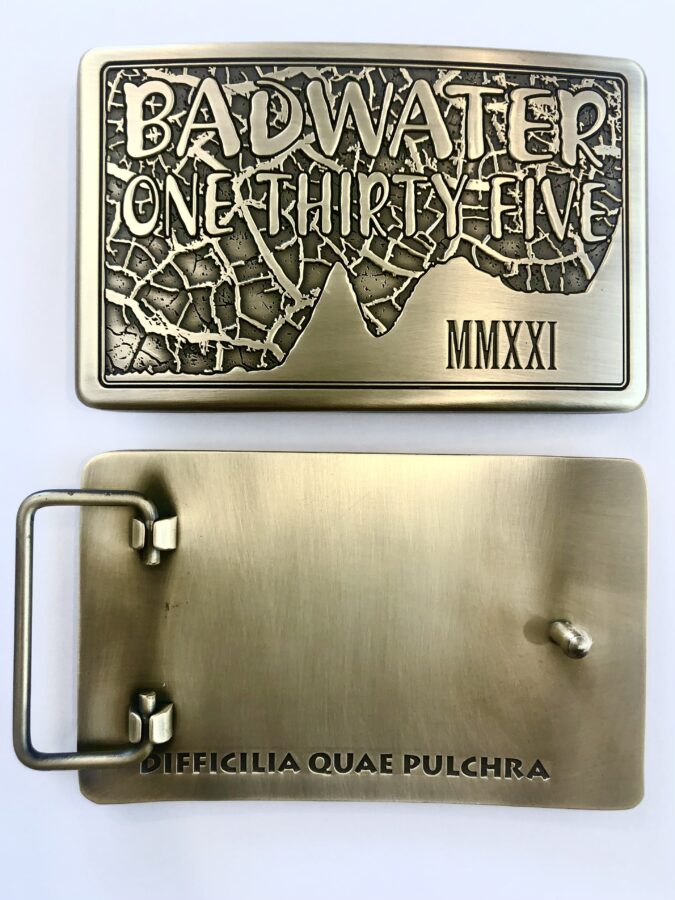
The 2021 edition of the Holy Grail of Ultra Running. Difficilia Quae Pulchra = “Beauty is Difficult to Attain“ in Latin.
MEET SOME OF THE COMPETITORS
The 2021 race field is particularly competitive. Veteran men’s contenders include 2018 champion Michele Graglia, 37, of Big Bear City, CA (Italian citizenship), 2015 and 2016 champion Pete Kostelnick, 33, of Brunswick, OH (who also broke the 36-year-old Trans-USA running record in 2016); 2014 champion Harvey Lewis, 45, of Cincinnati, OH (who placed 2nd in 2016, 3rd in 2017, and 3rd in 2019), 2011 men’s champion Oswaldo Lopez, 49, of Madera, CA (Mexican citizenship), and others including multiple Badwater Salton Sea champion Ray Sanchez, 54, of Sacramento, CA and David Jones, 69, of Murfreesboro, TN, the 1997 Badwater 135 race champion, ten-time finisher, and 60+ age group record holder. There are 33 rookie men and 27 veteran men.
The women’s field is also stacked with talent, but includes no previous women’s Badwater 135 champions. The women’s field of 24 female runners includes 13 rookies and 11 veterans. Notable veteran contenders include several who finished impressively in 2019: third place Lisa DeVona, 45, of Pompano Beach, FL; fourth place Caryn Lubetsky, 50, of Miami Shores, FL; and 6th place Suzi Swinehart, 49, of Fort Wayne, IN who is also a Badwater Cape Fear champion. Making her rookie debut is Lori Mitchener, 44, of Lynnfield, MA, who has won multiple 100-mile races, including the legendary Keys 100. Hoping to dramatically improve on previous performances are Sally McRae, 42, of Huntington Beach, CA, who struggled valiantly – and finished – at her rookie race in 2018 and Nancy Levene, 53, of New York City, who had to drop out in 2019 when her support vehicle broke down.
Notably – due to the pandemic-imposed travel bans – only one non-USA resident female is competing, Norma Roberts of Canada. Others carrying their home country flags – but who live in the USA – are Telma Ghazarian Altoon representing Armenia, Sandy Geisel representing Canada, and Karla Kent representing the Czech Republic.
Both Harvey Lewis and Ed “The Jester” Ettinghausen will be attempting their tenth finishes this year, while Danny Westergaard is going for his 14th consecutive finish, Karla Kent is going for her ninth consecutive finish, and Kimberlie Budzik is going for her eighth finish.
This brief handicap of the race notwithstanding, every year is a new year at the Badwater 135, with both veterans and rookie athletes impressing everyone with incredible, gutsy performances. With every single runner hungry to go home with the coveted Badwater 135 Official Finisher Belt Buckle, both known and new stars will shine as the race unfolds.
WAVE STARTS
As detailed on the race roster, the race will begin in three waves on Monday evening, July 19. They are assigned according to their predicted finishing time, with the Fast Runners going first, Faster Runners going second, and Fastest Runners (at least on paper) going third.
• Wave 1 (800pm): 21 men and 13 women; 23 rookies and 11 veterans = 34 runners
• Wave 2 (930pm): 19 men and 5 women; 13 rookies and 11 veterans = 24 runners
• Wave 3 (1100pm): 20 men and 6 women; 11 rookies and 15 veterans = 26 runners
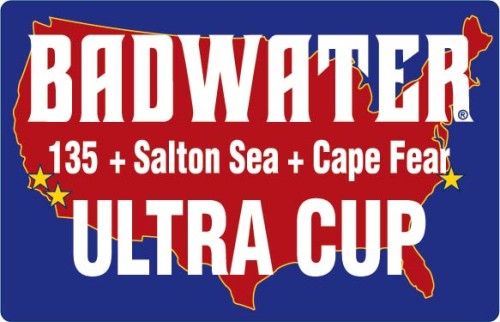 The Badwater 135 is the final event in the Badwater® Ultra Cup, a three-race series which began with the 51-mile Badwater® Cape Fear in March, continued with the 81-mile Badwater® Salton Sea in April, and now concludes with the Badwater 135 in July. Those runners who complete all three events in the same calendar year are featured on the Badwater.com website and their virtues are extolled throughout the Internet and in future editions of BADWATER Magazine. In 2014, seven athletes completed the entire Badwater Ultra Cup, nine completed it in 2015, sixteen in 2016, fifteen in 2017, eight in 2018, and eleven racers completed the Badwater Ultra Cup in 2019. Time will tell how many complete this three-event challenge in 2021.
The Badwater 135 is the final event in the Badwater® Ultra Cup, a three-race series which began with the 51-mile Badwater® Cape Fear in March, continued with the 81-mile Badwater® Salton Sea in April, and now concludes with the Badwater 135 in July. Those runners who complete all three events in the same calendar year are featured on the Badwater.com website and their virtues are extolled throughout the Internet and in future editions of BADWATER Magazine. In 2014, seven athletes completed the entire Badwater Ultra Cup, nine completed it in 2015, sixteen in 2016, fifteen in 2017, eight in 2018, and eleven racers completed the Badwater Ultra Cup in 2019. Time will tell how many complete this three-event challenge in 2021.
OFFICIAL SPONSORS AND CHARITIES
Now in its twenty-second year producing this race, AdventureCORPS is pleased to welcome Pure Vitamin Club, Joe Nimble Shoes, NSNG Foods, and First Discount Brokerage as Official Sponsors of Badwater. We also thank the Oasis at Death Valley, Stovepipe Wells Resort, Panamint Springs Resort, and Dow Villa of Lone Pine, the community of Lone Pine, CA, the County of Inyo, the Lone Pine Chamber of Commerce, and other generous companies and individuals who support Badwater 135 each year. More info about our sponsors.
Official Charities of Badwater include the Challenged Athletes Foundation. As one of the very few charities that provides grants directly to athletes with a physical disability, the Challenged Athletes Foundation has raised over thirty million dollars and directly assisted thousands of challenged athletes world-wide. AdventureCORPS has – as of 2021 – raised over $776,000 for Challenged Athletes Foundation, and AdventureCORPS athletes have also raised impressive sums for CAF.
AdventureCORPS also supports the Bald Head Island Conservancy, Death Valley Natural History Association, Conservation Alliance, and One Percent For The Planet. One of the goals of the Badwater 135 is to raise funds for, and awareness of, these organizations. More info. Additionally, many of the race entrants are competing on behalf of a charity of their choice, and these are noted and linked from the race roster.
A LEGENDARY HISTORY
This year’s race celebrates the 44th anniversary of Al Arnold’s original trek from Badwater Basin to Mt. Whitney in 1977. Arnold, an ultrarunning pioneer, human potential guru, and health club manager, competed in a solo effort: it was just Arnold and his support crew against the elements and the clock. It took him three efforts before he was successful, having first attempted the route in 1974 and then 1975.
Four years later, Jay Birmingham also completed the course, in 1981. The official head-to-head race began ten years after Arnold’s pioneer trek, in 1987, and has been held annually since then without serious incident, fatality, or any citations issued by any branch of law enforcement. (The race was sadly canceled due to COVID-19 in 2020.)
We brought Al to the race in 2002, the 25th anniversary of his run, and he was treated like a rock star by everyone in attendance. Sadly, we lost our incredible friend Al Arnold when he passed away on September 6, 2017 at the age of 89. He is sorely missed, but his spirit lives on with each year’s edition of the world’s toughest foot race.
Jay Birmingham, now 76, remains very active with the world of Badwater, first by serving on the Badwater 135 Application Review Committee, but also as an athlete. He has competed in all of the Badwater races and plans to run our Artsakh Ultra Stage Race Armenia in 2022.
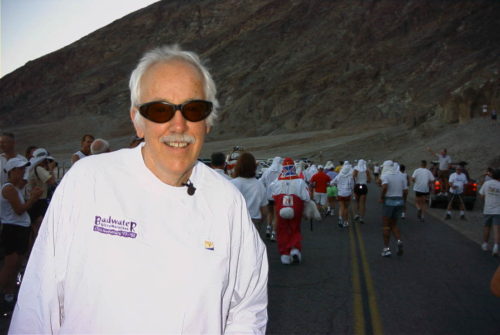
Al Arnold at the start line of the 2002 Badwater Ultramarathon.
For more info about Al Arnold and also the original race click these links:
1977 Al Arnold / 1987 Race
WEBCAST, RACE UPDATES, PRESS CREDENTIALS, AND FURTHER INFO:
A stock image gallery – for bona fide media use only – may be accessed at this link, with Photographer Name / Badwater.com attribution required.
For media attending the event in person, download the full 2021 Badwater 135 Press Kit at at this link.
FOLLOWING THE BADWATER 135 ONLINE
For the duration of the 2021 race, fans can follow the race through a “live” webcast at this link (which will remain archived at that link.)
Follow the 2021 time splits and results at this link.
Follow the race on Twitter @Badwater: http://twitter.com/badwater
Official Hashtag across all social media: #Badwater135
Follow the race staff’s live photostream on Instagram @BadwaterHQ
Follow the race director’s live photostream on Instagram @ChrisKostman
Follow the AdventureCORPS race staff’s photostream archive on Flickr
Follow the race director Chris Kostman’s photostream archive on Flickr
Follow our Facebook @Badwater135 page and the #Badwater135 Facebook conversation
Download the July 2021 issue of BADWATER Magazine at this link.
ABOUT ADVENTURECORPS, INC.:
Oak Park, CA-based AdventureCORPS®, Inc. has made its name producing the world’s toughest endurance races in dramatic, remote locations that few people would ever visit, let alone run or bike across. Held under the Badwater® banner, these events have allowed runners and bicyclists to explore Death Valley, the Salton Sea, Cape Fear, the Mojave Desert, and the Nevada outback in the USA, as well as the Okanagan Valley of British Columbia, Mustang region of Nepal, Yunan Province of China, and now in the Republics of Artsakh and Armenia.
AdventureCORPS®, Inc. owns and represents BADWATER®, “The World’s Toughest Brand, Gear, and Races.” As a brand, BADWATER represents digging deep and going farther; it is the lifestyle brand for all who push their limits while exploring the outer and inner universes.
Badwater® is a federally registered trademark owned by AdventureCORPS, Inc.
More info: www.adventurecorps.com and www.badwater.com.
CONTACT:
Chris Kostman
Chief Adventure Officer and Race Director
AdventureCORPS, Inc. 638 Lindero Canyon Road, #311
Oak Park, CA 91377 USA
